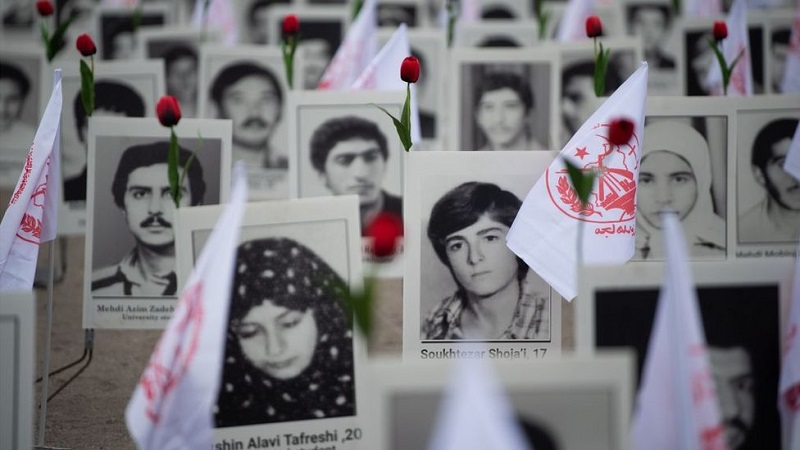
Thirty-three years after the brutal massacre of over 30,000 political prisoners in Iran, the impacts of this event are still palpable in Iran today as many of the massacre’s perpetrators are currently holding top positions in the regime, including the President Ebrahim Raisi.
The National Council of Resistance of Iran (NCRI) said, “Many analysts have already drawn conclusions about the incident, but their statements reveal a general lack of information about the real motives behind the fatwa that instigated the genocide.”
In the summer of 1988, then-supreme leader Ruhollah Khomeini issued a fatwa to sentence thousands of political prisoners to death, which was implemented by ‘death committees’ who were ordered specifically target members and supports of the Resistance group, the People’s Mojahedin Organization of Iran (PMOI/MEK).
The MEK were charged with ‘waging a war on god’ for their opposing ideologies of Islam, accused of treason against the regime and classed as hypocrites. The charges placed upon them were the regime’s attempts to tarnish their image and dissuade people from showing them support.
The NCRI said, “In 32 words, Khomeini acknowledges the real motive behind the 1988 massacre. Those who remained ‘steadfast’ in the MEK’s ideals — namely freedom, democracy, and a tolerant form of Islam — were sentenced to death.”
While the regime, at the time, claimed that the death sentences given were as a result of the prisoners’ conduct, the political prisoners were executed purely because of their political and religious views.
Prisoners were examined for their affiliations in ‘death commissions’ across Iran, a panel of three or four judges who were tasked with ordering executions for those prisoners who refused to denounce the MEK. As a specific group of people were targeted purely because of their faith, this crime against humanity is an act of genocide, a fact that was highlighted during an international conference this year by a number of experts including Geoffrey Robertson QC, a British legal expert.
The NCRI said, “This brutality against the dissident has never ended since 1988. Thousands of Iranians who stood up for their rights have been killed.”
November 15 marks the second anniversary of a major uprising in Iran, where people took to the streets in over 200 towns and cities across the country to demand their basic rights.
In a bid to end the protests, the regime’s security forces were ordered to open fire on the crowds. As a result, 1,500 protesters were gunned down, and a further 12,000 people were arrested and detained. For months after, the detainees were subjected to brutal torture overseen by the regime’s Head of Judiciary, who at the time was Raisi.
Despite the horrors that regime officials have inflicted on the Iranian people over the past four decades, rather than being held accountable for their actions, they have been seemingly awarded with some of the highest positions within the regime, showing that systematic impunity really does reign supreme in Iran.
The NCRI said, “This impunity largely stems from the international community’s failure in holding the regime to account in the first place. In 1988, the world community turned a deaf ear to repeated calls by the Iranian opposition to investigate the 1988 massacre.”
A letter published by seven U.N. experts at the end of 2020 criticized the international community’s failure to act, marking that this has “had a devastating impact on the survivors and families as well as on the general situation of human rights in Iran,” and, “emboldened Iran to continue to conceal the fate of the victims and to maintain a strategy of deflection and denial that continue to date.”
The NCRI said, “Tehran should know that its human rights violations will no longer be tolerated. But if this message is not firmly delivered, the regime will only continue to reinforce the legacy of the 1988 genocide.”